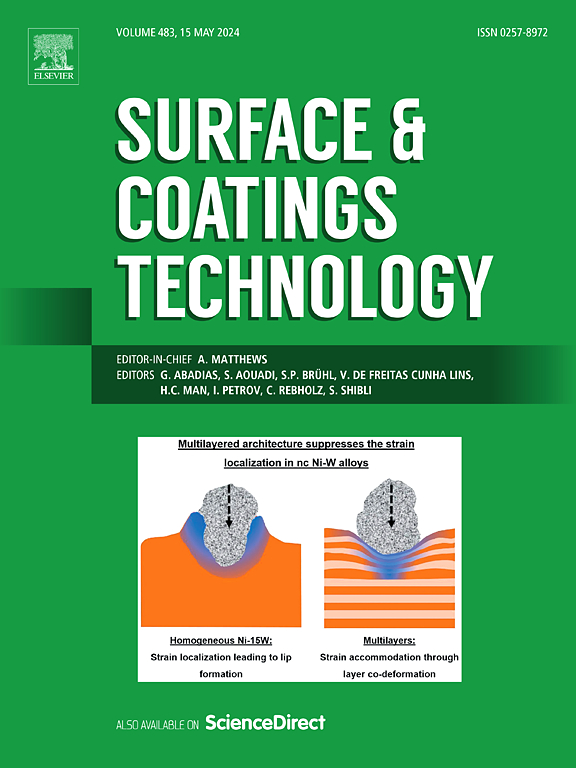Unveiling the synergistic potential: Surface topology and osteogenic elements in biodegradable Zn alloys
IF 5.3
2区 材料科学
Q1 MATERIALS SCIENCE, COATINGS & FILMS
引用次数: 0
Abstract
The topological structure of material surfaces plays a crucial role in cell behavior and tissue regeneration. Current research and applications concerning topological structures for tissue repair predominantly revolve around polymer materials and traditional inert metals. To expand the application of topological structures in the field of biomaterials, this study employed laser etching to create four different topological structures – groove, grid, triangle, and star – on the surface of a biodegradable Zn-0.4Li alloy. In this study, we investigated the effects of different topological structures on the degradation and antibacterial properties of alloys, as well as their influence on cellular behavior and function when synergistically interacting with osteogenic active elements. Our results demonstrated that the presence of micro-nano composite topological structures has significantly altered the physicochemical properties of the material surface. Additionally, laser treatment and the increase in surface roughness resulted in the release of a higher Zn ion concentration. On the one hand, the material's antibacterial performance was enhanced under the combined action of the micro-nano composite on the surface inhibiting bacterial adhesion and the bactericidal effect of zinc ions. On the other hand, excessive zinc ions may cause the concern of cell viability decrease. The tolerance of cells to zinc ions was improved by adding osteogenic elements Ca2+ and Sr2+. The synergistic effect of micro-nano composite topological structures and osteogenic elements promoted cell adhesion and osteogenic differentiation, and induced cell orientation. The biocompatibility of the material has been significantly improved, enabling the material to be applied to tissue repair and regeneration.

求助全文
约1分钟内获得全文
求助全文
来源期刊

Surface & Coatings Technology
工程技术-材料科学:膜
CiteScore
10.00
自引率
11.10%
发文量
921
审稿时长
19 days
期刊介绍:
Surface and Coatings Technology is an international archival journal publishing scientific papers on significant developments in surface and interface engineering to modify and improve the surface properties of materials for protection in demanding contact conditions or aggressive environments, or for enhanced functional performance. Contributions range from original scientific articles concerned with fundamental and applied aspects of research or direct applications of metallic, inorganic, organic and composite coatings, to invited reviews of current technology in specific areas. Papers submitted to this journal are expected to be in line with the following aspects in processes, and properties/performance:
A. Processes: Physical and chemical vapour deposition techniques, thermal and plasma spraying, surface modification by directed energy techniques such as ion, electron and laser beams, thermo-chemical treatment, wet chemical and electrochemical processes such as plating, sol-gel coating, anodization, plasma electrolytic oxidation, etc., but excluding painting.
B. Properties/performance: friction performance, wear resistance (e.g., abrasion, erosion, fretting, etc), corrosion and oxidation resistance, thermal protection, diffusion resistance, hydrophilicity/hydrophobicity, and properties relevant to smart materials behaviour and enhanced multifunctional performance for environmental, energy and medical applications, but excluding device aspects.
 求助内容:
求助内容: 应助结果提醒方式:
应助结果提醒方式:


